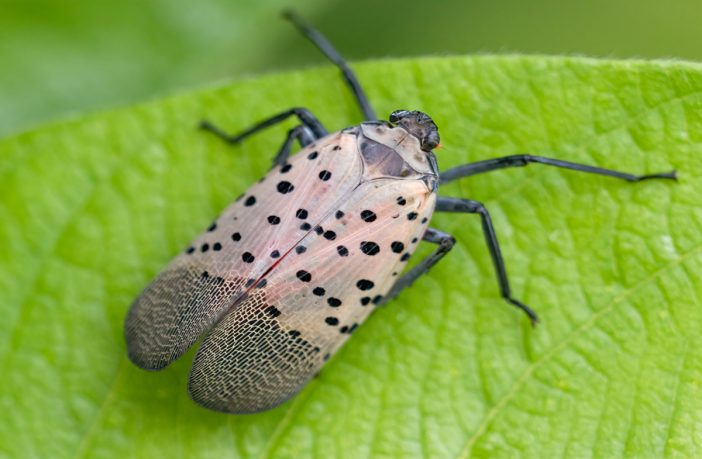The Town of Huntington has issued important information from the Cornell Cooperative Extension of Suffolk County regarding an invasive species of insect: the spotted lanternfly.
An invasive new planthopper, the spotted lanternfly is now well-established around much of central and western Long Island, including western Suffolk, Nassau, Queens and Brooklyn. If you haven’t seen it in this area yet, you probably will soon! If you see it in the region, what should you do?
- Don’t worry! The spotted lanternfly isn’t dangerous to people or animals, doesn’t damage structures and can’t survive or breed in homes. It isn’t a killer of landscape plants either, though high numbers stress plants and are an annoyance. High numbers have been known to kill grape vines, however.
- You can take a (clear) photo and report the sighting to the NYS Dept. of Agriculture. Collect the insect in a vial of rubbing alcohol if you would like to submit for ID.
- If you have questions or would like to submit a sample contact the Cornell Cooperative Extension of Suffolk County Home Horticulture Diagnostic Lab Information Line at 631-727-4126. Calls are taken Monday to Friday from 9 am to 12 pm.
NYS Department of Agriculture and Markets is already aware of its prevalence across central and western Long Island and already has many reports from these areas. The Department is particularly interested in new sightings from eastern Long Island, i.e. areas from Yaphank and farther east as it is a particular threat to vineyards.
NYS DEC suggests after reporting SLF in your area (to the NYS Dept of Agriculture, link above) you should kill any SLF you see by stepping on it or crushing it. The insects sometimes hitch-hike on vehicles – don’t move them to new areas!
Learn more about the spotted lanternfly and how to manage it here.














